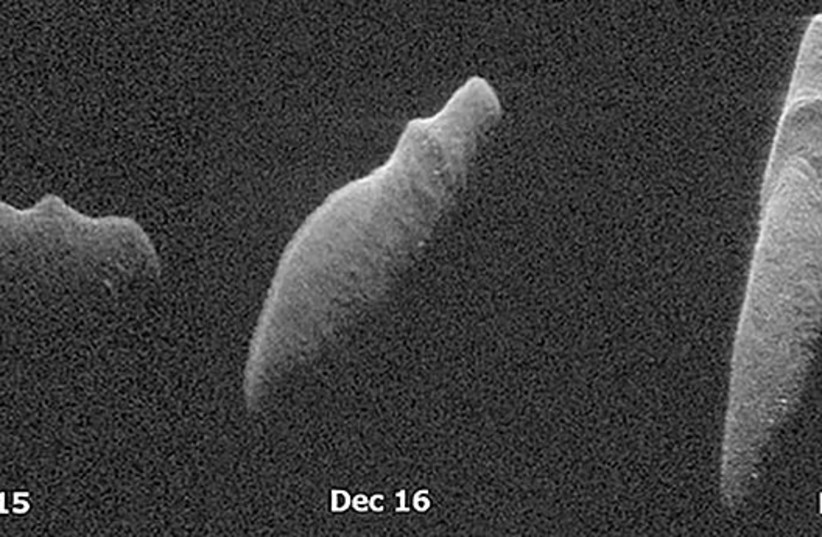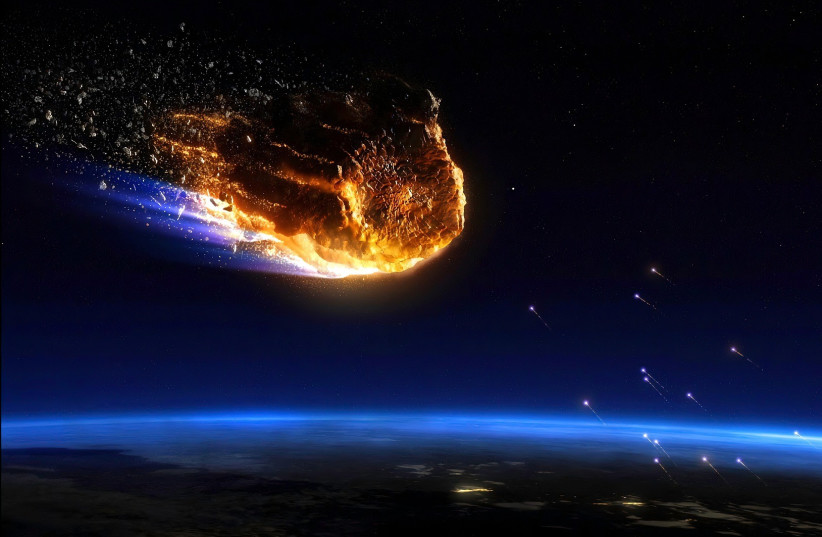A massive asteroid, comparable in size to the tallest building on Earth, is heading for the planet in mid-December, as noted by NASA's asteroid tracker.
Designated 163899 (2003 SD220), the massive asteroid has a diameter of approximately 791 meters, nearly half a mile long. This is nearly the size of the Burj Khalifa in Dubai, the tallest manmade structure on Earth.
However, observations made in 2015 by the Arecibo Observatory in Puerto Rico suggested it could be far larger, at least 2 kilometers in length, with observers comparing its shape to that of a sweet potato.
NASA later came up with different measurements, around 1.6 kilometers, and compared its shape to that of a hippopotamus. However, current NASA estimates place the asteroid at a diameter of 791 meters.
The asteroid is set to fly past the Earth on December 17 within a distance of around 5.4 million kilometers away from the planet at a speed of 5.6 km/s.

For comparison, the distance between the Earth and the Moon is far less than that – around 385,000 km. As such, despite being classified as a Potentially Hazardous Asteroid (PHA) due to its size and close proximity to Earth, it seems unlikely to pose a threat to the planet. In fact, NASA has declared the Earth safe from asteroid impacts for the next 100 years.
The asteroid is considered to be in the Aten-class, meaning its orbit crosses over with Earth's orbit around the Sun, but it spends most of its time inside it.
As such, there is the theoretical chance it could one day strike the planet, but current calculations show this isn't a concern right now.
However, there is other value in this asteroid, as it could hold the potential for being the site of a possible robotic exploration mission.
Currently, no such mission is planned, but it is theoretically possible. NASA's Jet Propulsion Laboratory calculated data for a hypothetical exploration mission to the asteroid. According to these calculations, it would have a delta-v (a measure of various values and factors determining how difficult it would be to properly maneuver a spacecraft during takeoff and/or landing) of 9.851 km/s. For comparison, this is around the delta-v for launching a rocket into low-orbit.
Asteroid exploration is a major field in astronomy, and many space agencies have expressed interest in exploring the many large objects in the solar system.
In October, the United Arab Emirates announced plans for a new mission to explore asteroids, and be the first Arab nation to successfully land a spacecraft on an asteroid.
Tentatively set to launch in 2028 with a seven-year development time for the spacecraft, the mission will see the UAE explore the planet Venus, as well as seven asteroids, culminating in a planned landing on an asteroid itself in 2033 after a five-year journey.
Three nations have landed on asteroids in the past, and many see them as possible sources for future mining operations, as these asteroids can be rich in raw materials.

Regardless of the potential though, many are also rightly worried about the dangers of near-Earth asteroids, as impacts can be devastating and humanity currently lacks an adequate means of defending against them.
One method for possibly stopping the impact of an asteroid is through the use of deflection, which would mean launching something to slightly alter its path.
In layman's terms, it means punching an asteroid with a rocket with enough speed to change its direction by a fraction of a percent.
The most prominent of these efforts is the Double Asteroid Redirection Test (DART) Mission, set to be launched in November, the result of efforts by NASA and the Applied Physics Laboratory.
However, other measures have also been considered – such as disruption, meaning destroying the asteroid, but at this time – these remain hypothetical.
